Chances are that you’ve stumbled across this blog because you’ve heard about the potential benefits from different mushroom species, you’ve searched for products, and you see many companies discussing this thing called “extraction”.
And as an educated consumer, you’ve come to the right place to understand why this process is so important when searching for high-quality products.
Let’s face it, a simple search on Google or Amazon for “mushroom products” can be overwhelming. Hundreds of companies are all trying to sell you their product…
What part of their campaign is just good marketing?
What part is actually backed by scientific research?
Well, what you have to understand is that mushroom extraction is crucial to the effectiveness of the products you’re buying and any company selling a product should not only be able to detail their process, but should be able to tell you why they do it.
What is mushroom extraction and why is it needed?
Simply put, extraction is the process in which the mushrooms go through in order to make the beneficial, “medicinal” properties, bioavailable so that our bodies can absorb them.
Mushrooms have a very tough cell wall with a main component called chitin.
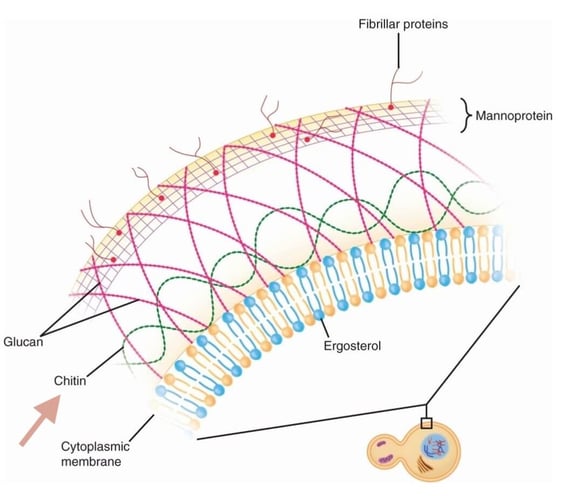
IMAGE SOURCE:Willey JM: Prescott, Harley, & Klein’s Microbiology.
Chitin is very difficult for our bodies to break down. Think of it as a barrier to a bunch of active compounds (like beta-glucans and terpenoids) that have shown positive health benefits in studies. We review those compounds later in the article.
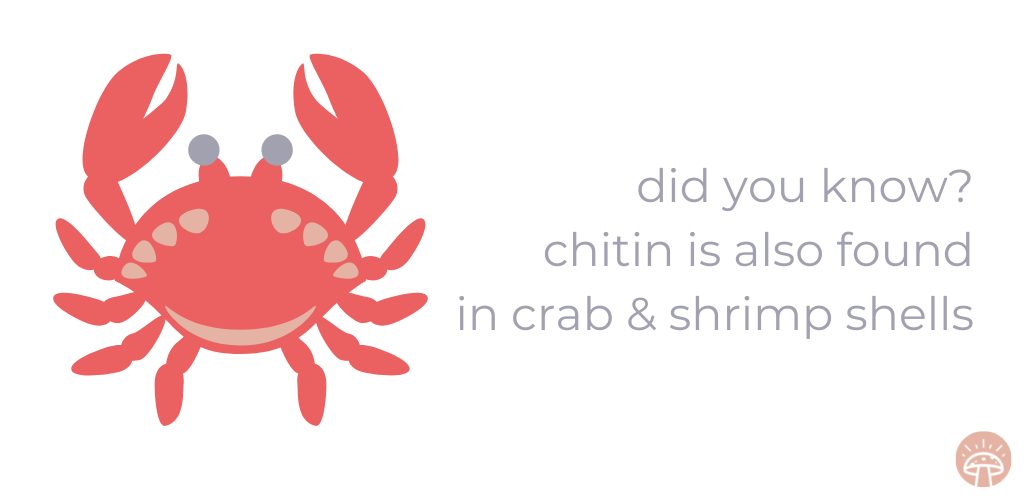
The mushroom extraction process helps to break down the chitin so that our bodies can access the compounds hidden beneath it.
Without extraction, we will not get the full benefit from these compounds.
Now, let’s take a look at the core differences between mushrooms that aren’t extracted vs those that are:
Mushroom powder vs mushroom powder extract
When you start shopping for mushroom supplements online, you’ll see that a lot of companies just sell mushroom powder - as in dried up and ground raw mushrooms. No extraction process was done.
Now, mushroom powder still has significant nutritional value. Whole mushrooms are great for you and are a staple of many diets. Especially in eastern cultures.
But our bodies can only access about 20% of the available beta-glucans from mushrooms or mushroom powder that haven’t been extracted. That’s because it’s hidden beneath that tough chitin exterior we discussed earlier.
On the flip side, companies that offer mushroom powder extract, have taken their product through extraction to make those compounds more bioavailable.
Let’s review:
|
Mushroom Powder |
Mushroom Powder Extract |
|
Ground up, dehydrated whole mushrooms or mushroom mycelium |
A process by which to extract the beneficial properties of the mushroom through a heated water and/or alcohol extraction and then drying that extract into a powdered form |
|
This may provide you with the nutritional value of raw mushrooms to your diet |
This is ideal if you want medicinal and functional benefits from mushrooms. |
What is mushroom extraction?
Mushroom extraction refers to the process by which mushrooms are heated at very high temperatures and are combined with either water (beta-glucan extraction) or alcohol (terpene/terpinoid extraction) for maximum functional benefit. There are four common types of mushroom extraction:
- Water
- Alcohol
- Dual (water and alcohol)
- Triple (fermentation, water, and alcohol)
The types of mushroom extraction
Now that you can understand the importance of extraction when evaluating the products you’re looking to purchase, you’re one step closer to understanding how it works.
But knowing if your product is an extract vs a simple powder is just the start. You’ll then want to be cognizant of which extraction process was done, as they all have different benefits and reasons for being conducted.
|
Extraction Type |
Ideal Mushrooms |
Benefit |
|
Hot Water |
Reishi, lion’s mane, turkey tail, shiitake, and maitake mushrooms. |
Beta-glucans have enormous immune benefits and are hot-water soluable |
|
Alcohol |
Reishi, chaga, cordyceps, lion’s mane |
Terpenoids like monoterpenes, sesquiterpenes, diterpenes and triterpenes are alcohol soluable |
Hot water extraction
Different compounds require different extraction methods to get make them bioavailable for humans.
Beta-glucans, which are responsible for the immune-supporting benefits of mushrooms, are hot water soluble. You can read more about them here.
What this means is that in order for them to be made bioavailable (absorbed by our bodies), they must go through a hot water extraction.
Think of the process like steeping tea, but instead, this is done on a very large scale.
The same can be said for coffee, though this is obviously a much more simple “hot water extraction” than what happens in mushroom extract production.
The hot water breaks down the cell walls of mushrooms and, in a sense, pulls out the beta-glucans. It’s doing the hard work that our body just can’t do on its own. After being heated at very high temperatures in water, the beta-glucans are more readily able to be absorbed and their medicinal properties can be utilized by our bodies.
Did you know? Many people use mushrooms in teas and soups for a similar reason. Steeping or boiling your mushrooms in hot water can act like a mini extraction process. You may not get as many beneficial compounds as some commercially-produced extracts. But using mushrooms in tea is how mushrooms have been used medicinally for centuries.
Once the hot water extraction has been completed, you have two components:
- The heated powder
- The water it was heated in
If you’re extracting at home, you can consume the leftover liquid. Industrially, this liquid is typically also converted into a powder by evaporating the liquid through spray drying. Freeze drying and infrared drying are also ways that this is done. The liquid is just as important as the powder for functional applications. That’s why both are utilized in extracts.
The combined mushroom powder and dried extract water is called mushroom extract powder.
Extracts are a lot different than simply grinding up dried mushrooms, which is why you’ll want to look for extracts when shopping for your mushroom supplements. This is especially true if you’re shopping for reishi, lion’s mane, turkey tail, shiitake, and maitake mushrooms.
All mushrooms should go through a hot water extraction. Without it, we’d be missing out on these beta-glucans which give the immune supporting benefits we’re looking for.
It’s incredibly crucial in those with ultra-high beta glucan content like turkey tail and reishi.
Alcohol extraction
The second type of extraction process you’ll often see is an alcohol extraction. This is popular in both powders and liquid extracts (tinctures). However, most alcohol extracts are usually dual-extracts. More on that later.
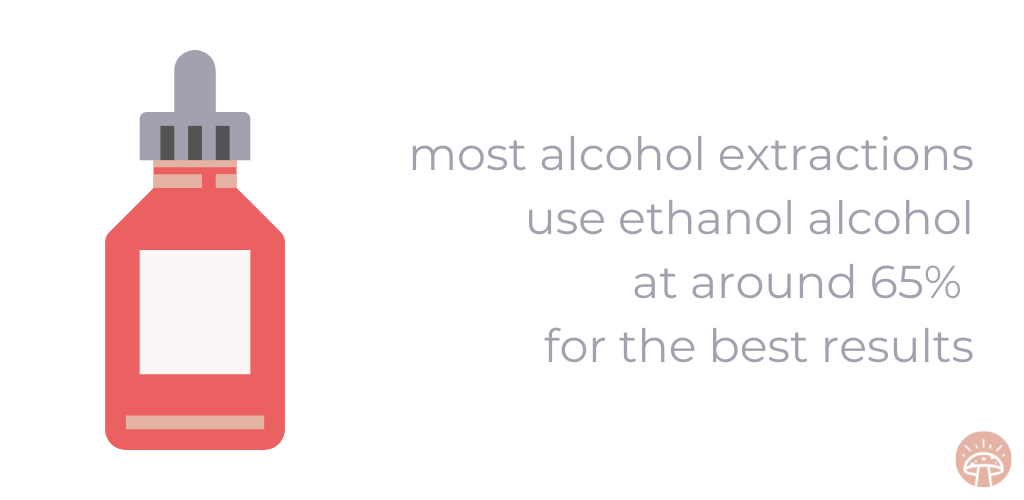
Much like the use of hot water for beta-glucans, alcohol is used to extract terpenoids, sterols, and flavonoids of select mushroom species that have researched benefits.
Terpenoids are among the most potent bioactive compounds in mushrooms with at least 5 monoterpenes, 70 sesquiterpenes, 44 diterpenes and 166 triterpenes having been discovered and analysed for their anticancer, antitumor, antimicrobial properties and effectivity in countering neurodegenerative diseases (Duru and Cayan 2015).
Terpenoids are not water-soluble so alcohol extraction must be done to help them break away or separate from the raw mushroom.
As of now, the most researched terpenoids are triterpenes in reishi, like ganoderic acids, triterpenes in chaga, like inotodiol, and diterpenes in lion’s mane, like erinacine.
Depending on the specific medicinal benefit you’re looking for, you may want to select an alcohol extraction for reishi, chaga, and lion’s mane mushrooms.
Products that only do a hot water extraction may be missing the ability to extract all the best compounds to make them bioavailable for human consumption.
That’s why you’ll often see that consumer brands use a dual-extraction process.
Dual extraction
A dual extraction is exactly what it sounds like. A hot water AND alcohol extraction are both done to make all active compounds bioavailable.
Hot water for beta-glucans and alcohol for terpenoids.
Here’s how it usually works:
- A hot water extraction is completed and the extracted materials are separated out
- The extracted materials are then extracted with alcohol, usually ethanol.
- The liquid from the hot water extraction is combined with the liquid from the alcohol extraction creating the dual-extraction version
NOTE: Some sources indicate that a dual extraction may actually negatively impact the amount of beta-glucans that are present in the final product, lowering the percentage due to the use of high volumes of alcohol.
But, depending on the process, this amount could be minimal and potentially worth it to make the terpenes bioavailable.
A dual extraction isn’t always the best choice. So you’ll want to research which is best for your unique applications and desired benefits.
In species like reishi and chaga, extracting the beneficial terpenoids valuable to the efficacy of the product.
But, in products like turkey tail, cordyceps, shiitake, maitake, and others that hold their primary value in beta-glucans, an alcohol extraction may not be necessary and could be detrimental to that final beta-glucan count.
Triple extraction
Triple extraction is less common, but we’re starting to see these products advertised, so we’ll touch on this method briefly.
A triple extraction is usually one of two methods:
- An additional cold-water extraction that companies promote the use of after the dual extraction
- We’ve also seen companies talk about fermenting the mushrooms to make the beta-glucans, terpenes, and alkaloids more bioavailable
We don’t see any problems with either, but at this time, there’s no research behind this to prove it is MORE beneficial. Fermentation seems to be a more popular method emerging on the market.
Which extraction process is best for each mushroom type?
It all depends on the species! We’ve listed some of the most popular mushrooms below.
|
Species |
Hot Water Extraction |
Compounds Released with Water |
Alcohol Extraction |
Compounds Released with Alcohol |
|
Reishi |
✅ |
beta-glucans |
✅ |
Triterpenes (ganoderic acids) |
|
Turkey Tail |
✅ |
beta-glucans |
Not Necessary |
|
|
Chaga |
✅ |
beta-glucans |
✅ |
Triterpenes (inotodiol, trametenolic acid, betulinic acid) |
|
Lion’s Mane |
✅ |
beta-glucans |
✅ |
Diterpenes (erinacine) |
|
Cordyceps |
✅ |
beta-glucans, cordycepin |
✅ |
cordycepin |
|
Shiitake |
✅ |
beta-glucans |
Not Necessary |
|
|
Maitake |
✅ |
beta-glucans, maitake d-fraction |
Not Necessary |
If your product goes through one extraction or the other, or both, it’s always important to check the nutrition label and get in touch with the company so they can send you lab tests/CoA’s that can back up any claims about the volume of active compounds.
Testing is still in its infancy, but there are companies that offer these services, so most reputable companies should have no issue getting their products tested and providing you with these results.
What is a mushroom extract ratio?
You may see products out there that have a 4:1 extract…an 8:1 extract…10:1 extract, and even a 16:1 extract.
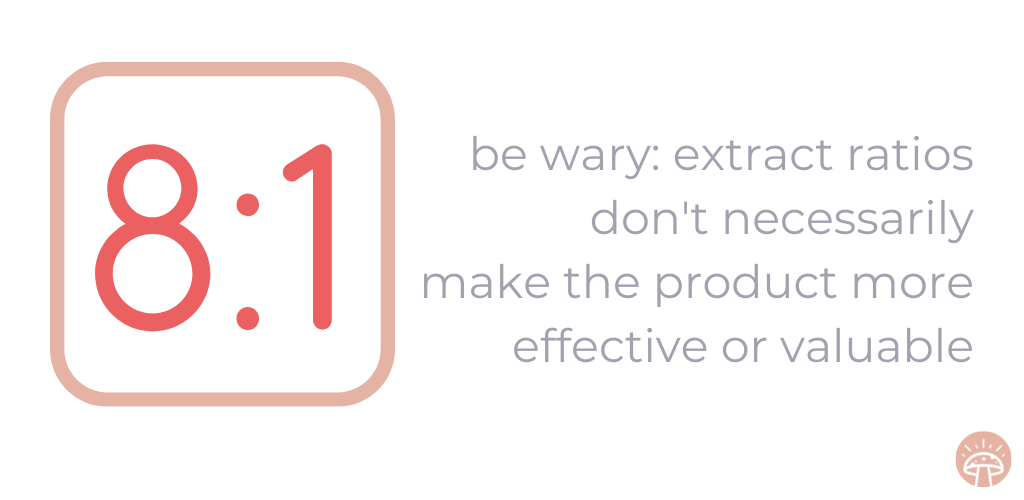
Ratio extracts like these refer to the concentration level. When an extraction is done, the whole mushroom (fruiting body) may not end up in the final product.
So, companies that do extractions are typically going to use X amount of mushrooms to produce Y amount of extract. For example, a 10:1 lion’s mane extract would mean that 10 pounds of lion’s mane mushrooms were used to make 1 pound of extract.
IMPORTANT NOTE: Many mushroom users are easily deceived by the marketing of these extract ratios. A higher extract ratio does not mean that a product is more “potent” than another.
They may try to say, for example, that a 10:1 extract ratio means that the product has 4 times the amount of mushrooms in the product.
They’ll use terminology like “equivalent to/from…”
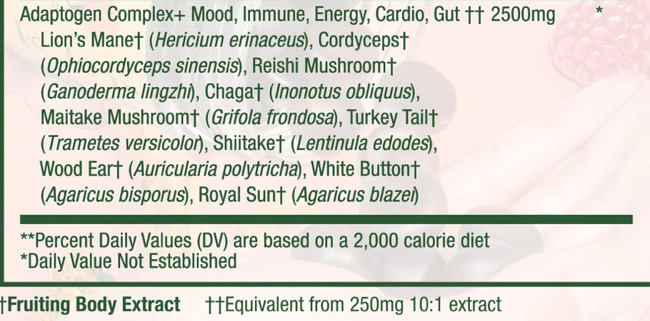
They say that there are 2500mg of mushrooms in this product with an asterisk that it is the “equivalent from 250mg 10:1 extract”.
To us, this type of labeling is dishonest and misleading.
The weight listed under 'amount per serving' (which is 2500mg on this supplement facts table) should actually state the actual physical ingredient amount used in the formulation (which is 250mg), and not the pre-extracted weight of the starting material of the ingredient.
There are many deceptive companies out there. So it’s important to keep this in mind. Extract ratio isn’t entirely important.
Read more about what beta-glucans are and why they're important here.The most important thing is that the product lists the active compound (beta-glucans and terpenes) percentages to know what you’re actually getting out of the product.
Mushroom extract dosage
While there is some research on different mushroom extracts that discuss the amount of extract used in trials, there isn’t a firm, recommended dose on any species at this time.
For example, in reishi, a study reports, “Dosages of 0.5–1 gm daily have been recommended for health maintenance, 2–5 gm for chronic health conditions, and up to 15 gm daily for serious illness.” But it also acknowledged that a recommended dose has not been established.
However, we’ve gathered together a list of typical doses you’ll see for mushroom extract by species.
Remember, this is not the same as dry powder or eating mushrooms raw. If eating mushrooms raw, the dose for medicinal benefits would likely be much higher. And again, because we can’t break down the tough cell walls of mushrooms, extraction must be done to make the beta-glucans and terpenes bioavailable (able to be absorbed by our bodies).
|
Species |
Typical Extract Dosage |
|
Reishi |
1000-2000mg per day |
|
Turkey Tail |
1000-3000mg per day |
|
Chaga |
1000-1500mg per day |
|
Lion’s Mane |
1000-3000mg per day |
|
Cordyceps |
1000-3000mg per day |
|
Shiitake |
1000-2000mg per day |
|
Maitake |
1000-2000mg per day |
Of course, dosing varies from person to person. It can be affected by weight, age, gender, etc. You should always consult your doctor before incorporating medicinal mushrooms into your diet or supplement routine. Some mushrooms can have detrimental side effects with certain medications and treatments.
When it comes to dosing, we like to use the coffee analogy.
Some people can have a sip of coffee and get jitters and feel extremely alert. Others may need a couple cups. And then some people could drink multiple cups of coffee and easily fall asleep.
While caffeine is much different than mushroom extracts, the point is that with some trial and error and consultation with your doctor, you’ll likely be able to find the dosage that works best for you.
Just note that when using a mushroom extract, it could take 30-60 days of continued use to have a noticeable effect. We’ve also seen some consumer reviews say that they didn’t realize the true effects it had until they stopped taking them.
Mushroom extract considerations
While knowing which extraction process is best, depending on species, and understanding what active compounds are most important to the product you’re purchasing, there is an important piece to it all.
How is the mushroom cultivated and what part of the mushroom is used in the extraction process?
The elephant in the room surrounding this topic is the debate between mycelium (the root system of the fungi) and the fruiting body (the stalk and cap that you would identify as a mushroom).
We’ve broken out the importance of both here and what you’ll want to look for when purchasing a product!

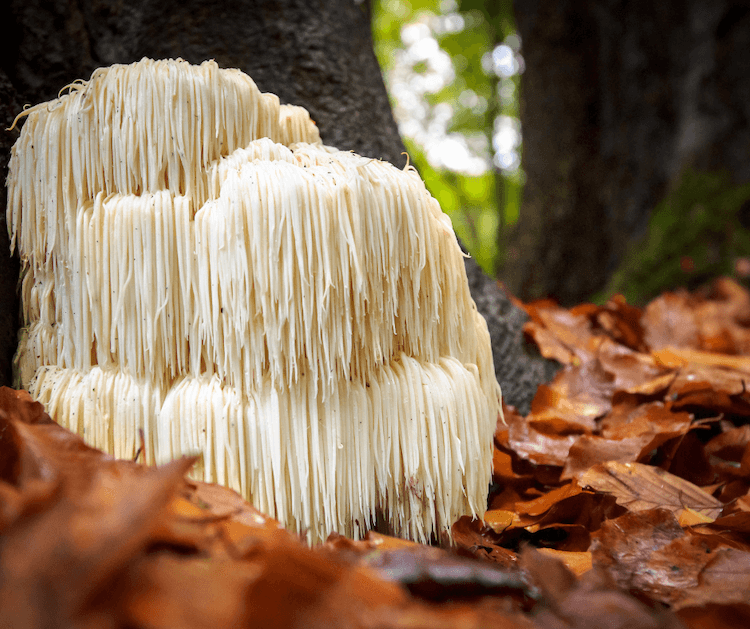
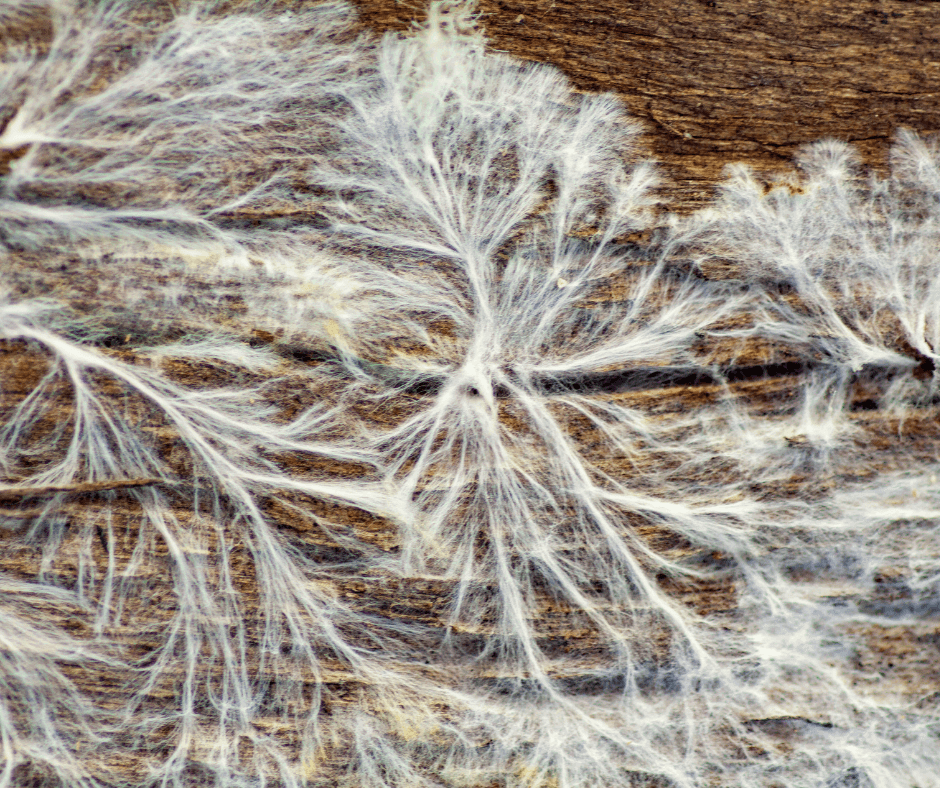


.png)
